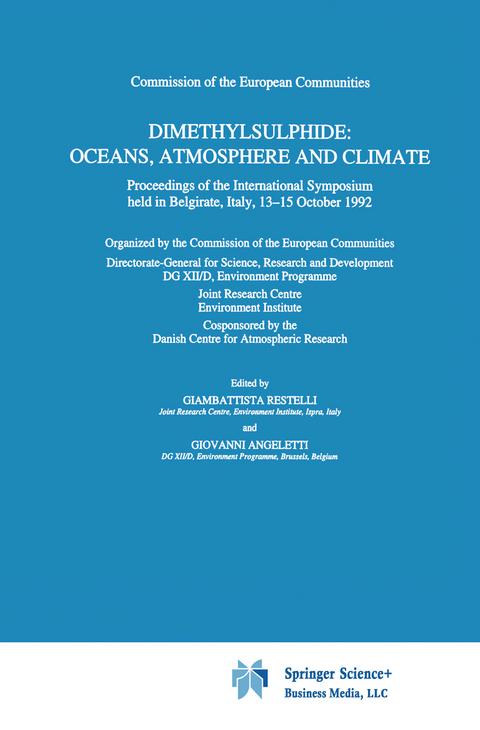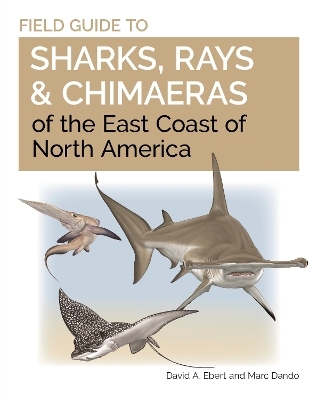
Dimethylsulphide: Oceans, Atmosphere and Climate
Springer (Verlag)
978-0-7923-2490-4 (ISBN)
Production by Marine Phytoplancton.- Production of DMS by Marine Phytoplankton.- Assessment of the Role of Zooplankton in the Cycling of DMSP and DMS in the Water Column during EUMELI-4 (France — JGOFS).- The Cycling of Sulfur in Surface Seawater during PSI-3.- Ecophysiology of Ice Algae (Antarctica): Dimethylsulfoniopropionate Content and Release of Dimethylsulfide during Ice Melt.- Isolation of Marine Dimethylsulfide-Oxidizing Bacteria.- Aspects of the Biogeochemistry of Dimethylsulfide (DMS) and Dimethylsulfopropionate (DMSP) at an Antarctic Coastal Site.- The Production of DMS by a Plankton Community: A Mesocosm Experiment.- A Model of Dimethylsulphide Production during a Phytoplankton Bloom.- Field Measurements.- Dimethylsulfide Field Measurements.- Dimethylsulfide and Aerosol Measurements at Ross Island, Antarctica.- Measurements of Atmospheric and Seawater DMS Concentrations in the Atlantic, the Arctic and Antarctic Region.- Biogenic Sulphur in the Marine Boundary Layer of the Arctic the International Arctic Ocean Expedition, 1991.- Measurement of Dimethylsulfide, Sulfur Dioxide, Methanesulfonic Acid and Non Sea Salt Sulfate at Cape Grim Baseline Station.- Caracterization of Parameters Controlling Atmospheric Concentrations of Biogenic Dimethylsulphide Near a Coastal Algae Field.- Dimethylsulphide Measurements at Baring Head, New Zealand.- The Role of Methanesulphonic Acid in Snow Samples from Terra Nova Bay (Antarctica).- Preliminary Data on DMS Concentration in Seawater Samples Collected from the La Spezia Gulf (Ligurian Sea).- Dimethylsulphide and Other Volatile Organic Sulphur Compounds in Some Neglected Ecosystems: A Study in Evaporitic Environments and in Sulphate-Rich Karstic Lakes.- Stable Sulfur Isotope Ratios: Source Indicators.- AtmosphericChemistry.- The Atmospheric Oxidation of Dimethylsulfide: Elementary Steps in a Complex Mechanism.- FT-IR Product Study of the Photolysis of CH3SSCH3: Reactions of the CH3S Radical.- Mechanistic Studies of the OH-Initiated Oxidation of Dimethylsulfide.- Overview and Atmospheric Significance of the Results from Laboratory Kinetic Studies Performed within the CEC Project “OCEANO-NOx”.- Field Studies of Atmospheric DMS Chemistry Using Selected Ion Chemical Ionization Mass Spectrometry.- Kinetic and Mechanistic Study of the Reaction of Atomic Chlorine with Dimethylsulfide.- Production of Peroxy-Radicals in the DMS Oxidation during Night-Time.- Laboratory and Modelling Studies of the Formation of a Stable Intermediate in the Night-Time Oxidation of DMS.- Do Dimethylsulphide Emissions from the North Atlantic Contribute to Rainwater Acidity and the Atmospheric Sulphur Burden in the UK?.- Gas-to-Particle Conversion and CCN Production.- Gas-to-Particle Conversion and CCN Production.- Pacific Marine Aerosol: Equatorial Gradients in Sulfate, Ammonium and Chlorophyll.- Formation and Distrubution of Cloud Condensation Nuclei in the Marine Environment.- Are Dimethylsulfide and Condensation Nuclei Connected over the Tropical Northeastern Atlantic Ocean?.- Cloud Condensation Nuclei from Dimethylsulphide in the Natural Marine Boundary Layer: Remote vs. In-Situ Production.- Equatorial Convection as a Source of Tropospheric Nuclei over the Remote Pacific.- Relationship between DMS-Derived Particulate Mass, Particle Surface Area, and CN and CCN Number Concentrations.- Global Modelling and Climatic Implications.- Atmospheric Concentration of DMS and Its Oxidation Products Estimated in a Global 3-D Model.- Recent Field Studies of Sulfur Gases; Particles and Clouds in Clean Marine Airand Their Significance with Respect to the DMS-Cloud-Climate Hypothesis.- Modelling of the Sulphur Cycle. From DMS to Cloud Particles.- Model Study of the Ratio between Methanesulphonic Acid (MSA) and Non Sea Salt-Sulphate in Coastal Air.- A Physical Receptor Model Applied to Aerosol Data from Northeastern Greenland.- Recognition and Inventory of Oceanic Clouds from Satellite Data Using an Artificial Neural Network Technique.
| Erscheint lt. Verlag | 30.9.1993 |
|---|---|
| Reihe/Serie | Air Pollution Research Reports ; 43 |
| Zusatzinfo | XII, 400 p. |
| Verlagsort | Dordrecht |
| Sprache | englisch |
| Maße | 156 x 234 mm |
| Themenwelt | Naturwissenschaften ► Biologie ► Limnologie / Meeresbiologie |
| Naturwissenschaften ► Biologie ► Ökologie / Naturschutz | |
| Naturwissenschaften ► Chemie | |
| Naturwissenschaften ► Geowissenschaften ► Geologie | |
| Naturwissenschaften ► Geowissenschaften ► Meteorologie / Klimatologie | |
| Naturwissenschaften ► Physik / Astronomie ► Angewandte Physik | |
| ISBN-10 | 0-7923-2490-0 / 0792324900 |
| ISBN-13 | 978-0-7923-2490-4 / 9780792324904 |
| Zustand | Neuware |
| Informationen gemäß Produktsicherheitsverordnung (GPSR) | |
| Haben Sie eine Frage zum Produkt? |
aus dem Bereich


